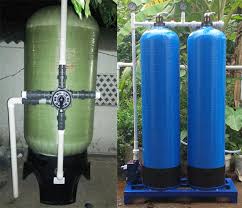The purification of water is vital to keeping your health and safety in check, and one of the simplest yet effective ways to filter water is the sand filter. This method has been used for long periods of time, ranging from simple sand beds, to more sophisticated multi-layer systems. Here’s a complete look at the way Water purification sand filterwork and their various types and their benefits.
How Sand Filters Work
At its heart the sand filter operates on the principle of physical filtering. Water flows through the sand bed which collects particles and impurities. The sand layer, typically composed of granular materials such as silica, provides a large surface area as well as a variety of pore sizes that efficiently get rid of bacteria, sediments and other contaminants. The process of filtration usually involves various phases:
Pre-Filtration: Larger particles as well as debris are removed before the water enters the sand filter to prevent clogging.
Filtration: The water flows over the sand beds, which is where particles of smaller size are encased within the sand layers.
Post-Filtration: Water that has been filtered is collected to be used for treatment or reuse.
Types of Sand Filters
The slow Sand Filters: These are inexpensive and simple to use, utilizing only one layer of fine sand. They use biological and physical processes to remove pollutants. As time passes, a biological layer, also known as a schmutzdecke is formed on the surface which improves filtration. They are suitable for smaller-scale projects for community or household water systems.
Rapid Sand Filters: These use an sand bed that is coarser and operate at a greater flow rate. They require frequent backwashing to remove accumulated impurities. Sand filters that are rapid in their operation are typically employed in municipal water treatment facilities due to their effectiveness and capacity.
Multi-Grade Sand Filters: These feature many layers of different sized sands and gravel. This allows for greater efficiency in the removal of a greater range of sizes for particles. Multi-grade filters are used in both large-scale and smaller systems to improve the efficiency of filtration.
Benefits of Sand Filters
Efficiency and Simplicity Sand filters are easy to construct and maintain, which makes them an affordable option for a variety of water purification requirements.
Environment Impact: They use no chemical and leave the smallest environmental footprint when compared to other filtration methods.
Durability Sand filters have a long lifespan and can be used in many settings, ranging from industrial to residential.
Scalability: They can be developed for personal use on a small scale or for large-scale municipal systems offering flexibility in response to the demands.
In Industrial sand filter (فیلتر شنی صنعتی) are a reliable and effective method for water purification. Their capability to eliminate various contaminants with simple biological and physical processes makes them an effective instrument to ensure clean and safe drinking water. It doesn’t matter if it’s a small-scale home system or a large-scale treatment facility, knowing the different kinds and benefits of sand filters will assist in making educated choices about water treatment solutions.


